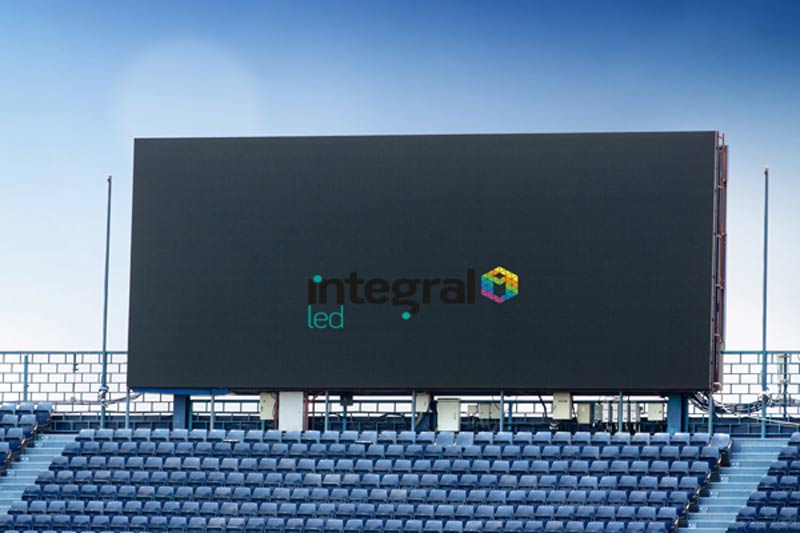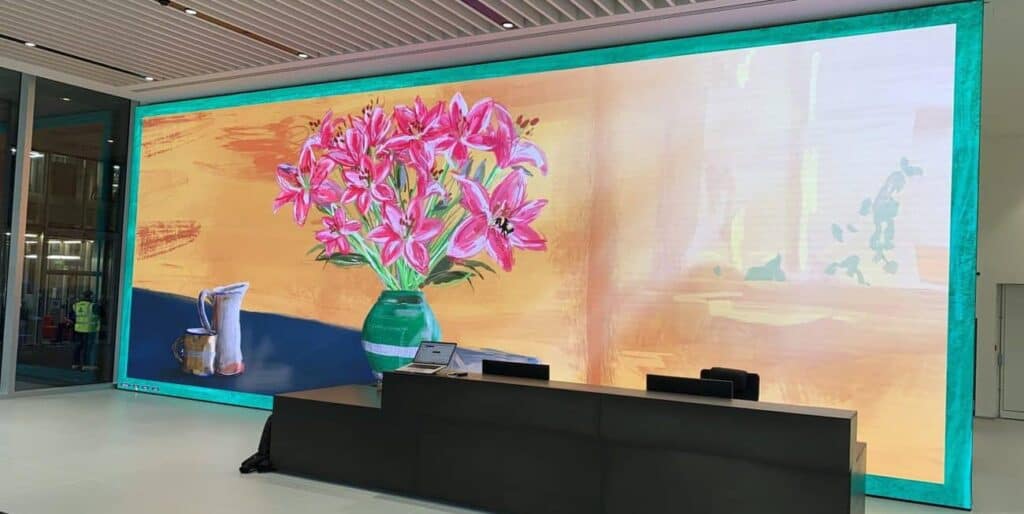Brightness and contrast ratio are critical elements to be considered when looking into LED displays since they can significantly affect the visibility clarity, brightness, and overall quality of the display, especially in different lighting conditions. Here's what makes them essential:
1. Visibility under a variety of lighting conditions
Brightness: The display's brightness is measured in nits. It is the number of candelas for each sq. meters. Outdoor displays that are exposed to bright sunlight (like direct sun) an extremely bright display (typically between 10,000 and 5,000 in nits) is necessary to ensure that the display information is clearly visible. Indoor displays generally require lower levels of brightness (around 500 to 1,500 nits) however, the brightness should be adjustable to accommodate various environments.
It is crucial to have a high brightness if the display will be placed in brightly-lit environments or outside. Lack of brightness can render the display unusable since the display content may be obscured or smudged by the direct sun.
2. Quality of image and clarity
Contrast Ratio - The ratio is the difference between the most white and darkest blacks the display can produce. A higher contrast rate increases the depth of an image by creating more vivid colors and also enhancing the clarity of the images. It is crucial when displaying content that is dynamic such as videos or photos that are high-contrast.
Application: Displays that have high contrast ratios are more adept in handling content that has various brightness levels, such as movies, commercials or live broadcasts. When using a display with a low contrast ratio for instance dark areas could appear gray, which can reduce the impact of the image.
3. Color Accuracy and Visual Impact
Color Accuracy and Brightness The brightness of a display plays a crucial role in color accuracy. Displays with consistent and suitable brightness can replicate color more accurately. This is vital in branding, advertising and other content where the integrity of color is crucial.
High contrast enhances the brightness of LCD displays. If two screens share the identical nit rating (or brightness) the screen with a higher contrast ratio will look more vibrant.
4. Energy Consumption
Brightness as compared to. Power Efficiency The brighter the illumination typically require higher power. When displays are in use all hours of the day or in large installations, it's crucial to balance brightness needs as well as energy efficiency. The advancements in LED technologies have led to more energy efficient displays, which can provide the highest brightness while not consuming a lot of energy.
5. Content Versatility
Brightness of Different Content Types The brightness of different content types can differ depending on what type of content you are using, like text, static pictures, or dynamic videos. Text-based content benefit from a high contrast, which makes it easier for reading. Video content might require a blend that balances brightness and color contrast.
Application: In environments where the content type is constantly changing (e.g. advertising screens or event displays) it is advantageous to have contrast and brightness adjustable settings. This will allow the display screen to adapt to various content needs.
6. User Experience
Brightness Adjustability: Displays with either automatic or manual brightness adjustments will provide more user-friendly experience by adjusting to changing ambient light conditions all day. This ensures that the display is always clear without causing glare or eye strain.
Contrast and Eye Comfort Eye Comfort - A high contrast ratio will reduce the strain on your eyes. This allows you to focus on the content for longer periods of time which is perfect for display at public events, in areas for retail or public use.
Conclusion:
The contrast and brightness of an LED display is essential to function effectively in the environment it is intended for. This ensures that the content is bright, clear and easy to read. The display can be used indoors or outdoors, in bright or dim settings the factors mentioned above will significantly impact its overall efficiency as well as the experience of the viewer. By balancing energy efficiency as well as display and content requirements and deciding on the most appropriate display. Take a look at the best smd screens for site info including led display, digital display, led video wall, video wall church, translucent led screen, transparent screen, led on screen, advertising tvs, flexible led display, led transparent display and more.

What Is The Significance Of Viewing Angle In Led Research On Display?
The angle of view is a crucial aspect to consider when researching LED displays, especially for applications where the display will be viewed from various positions and angles. This is why the angle of view is important:
1. Uniform Image Quality
Definition: The viewing angles of LED displays correspond to maximum viewing angles where the display can be viewed in a manner that gives adequate visual performance, typically in terms of brightness or color uniformity. The viewing angle is typically specified for both the horizontal and vertical directions.
The importance of a wider viewing angle will ensure that the image quality remains identical regardless of how the viewer is situated with respect to the display. This guarantees that brightness and colors do not affected when viewing from a side angle or from above/below.
2. Audience Experience
The impact of large venues. In large spaces like stadiums concert halls as well as conference centres, audience members are spread across the entire area. People who sit at angles can experience poor visibility as well as the quality of images on displays with an extremely narrow viewing area will be degraded.
Application: For large-scale installations or events where the audience is placed within an arc of large size an extended view angle is required to ensure that everyone are able to see a clear and vivid image of the material being shown.
3. The suitability of public Spaces
Public Displays: The viewing angle is very important in settings such as shopping malls transport hubs, outdoor displays and advertising. People will be observing the display all around them. A narrow angle of view will hinder the ability of the display in attracting and draw attention of visitors.
Application: For digital signage that is used in public spaces A wide viewing angle enhances the visibility of the display and ensures that the display is easily visible and appealing from a variety of angles.
4. Content Consistency
Color and Brightness Uniformity If viewed from an off-center location, a display with a bad viewing angle may show shifting color. This issue is particularly troublesome with regard to content that is brand-related, and where color accuracy can be crucial.
Application: When brand identity and uniformity of color are essential such as in retail displays or corporate settings A wide-angle view angle will ensure that your display will maintain its style from any viewing location.
5. Installation Flexibility
The versatility of a display that has an extended view angle may be placed in various locations. It allows for creative placement such as wrapping around columns or being placed in areas where viewers are approaching from different directions.
Application: For artistic or architectural LED displays, such as those in museums, galleries, or immersive experiences, a wider viewing angle can allow for more innovative designs without compromising the user's experience.
6. Performance in Renting and Staging
Event Settings: A wide viewing angle allows your display to be used in various environments. This ensures that it remains consistent in its quality no matter where you place your audience.
Application: Large viewing angles are ideal for occasions such as events or trade shows in which the audience is expected to move around or see the stage from different places.
7. Impact on ROI
Maximizing the Impact of Visuals The impact of a wide-angle display is that it can attract an audience that is larger that can boost the impact of the display as well as the return on investment. This is particularly important for informational screens and advertising displays, where visibility is crucial to achieving the desired outcomes.
Application Commercial Installations increasing the level of engagement by making sure that the display is visible from multiple angles could increase the efficiency of the content being displayed.
Conclusion:
The viewing angles are an important factor that directly impacts the effectiveness of LED displays. It is essential for situations that have a large number of viewers, and the display is able to be viewed from different angles or content consistency is crucial. When looking at LED displays it is important to consider an LCD with a wide viewing angle. This will ensure that the display meets your requirements and provides the best viewing experience to everyone. Take a look at the best quality rental led display for more recommendations including led wall, led screen display, display light led, outdoor display led, led light sign board, church video wall, tv led wall, led video wall panels, church video wall, led panel transparent and more.

What Is The Importance Of Cost, Roi And Energy Efficiency When Researching Led Displays?
When looking into LED displays it is essential to consider the factors like costs, ROI, and energy efficiency. These are key as they directly influence on the investment's longevity and financial viability. Why each of these factors are important:
1. The Initial Cost
Cost considerations: The initial cost associated with purchasing LED displays could be an important factor in any project. The cost of a display is not the only factor to consider. It also includes the installation costs, mounting systems, and accessories.
Quality and. Cost: While lower-cost displays appear attractive at first, there may be trade-offs regarding quality, durability or feature. It's important to balance your initial costs with the performance you want and durability of the display.
Application: When budgets are tight, an accurate evaluation of performance in relation to cost is essential. In some cases, high-end displays may be required for crucial applications such as advertising in prime locations. In other instances, more affordable options may be sufficient in environments which are less demanding.
2. Return on investment (ROI).
Revenue Generation: ROI is often tied to the ability of LED displays to generate revenue. It could be by advertisements, customer engagement or brand visibility. Displays that have compelling content that captures the attention of viewers could generate a profit in terms of advertisement and sales.
Durability and longevity Displays with longer life spans and better durability are likely to have a better ROI as they require less maintenance and replacement. The initial investment may be repaid through lower cost over time.
Impact of Features On ROI: Features like high brightness, wide viewing angles, high resolution and high resolution may increase upfront costs, but can improve audience engagement, leading to a higher ROI.
3. Energy Efficiency
Operational cost: The ability to cut costs with an LED display is dependent on energy efficiency. Displays that use less power will lead to lower power bills. This is crucial for large installations or displays that are operational 24/7.
Environmental Impact: Energy efficient displays reduce carbon footprints and contribute to sustainability. It's becoming more important for companies and organizations who have a strong commitment to sustainability or have to comply with the energy standards.
Long-term savings: Although energy-efficient displays might have a higher initial price, the savings in power costs over the lifespan of the display may be significant, which can boost the overall ROI.
Application: When installed in regions with high electricity costs or in large scale deployments the energy efficiency will make an impact on the total cost of operation.
4. Total Cost of Ownership (TCO)
Maintenance and repairs. The total cost of of ownership includes both the initial price of the display as well as the cost of maintenance, repairs, and any possible downtime. TCO is usually lower for displays that are durable and last for longer, which makes them more durable and a good investment over the long term.
Upgrades and Scalability - Consider the ease of upgrade or scale the display system. A modular display that can be updated or expanded with minimal costs could be a long-term investment.
Application: For environments in which displays could be anticipated to last for a lengthy duration, like in the workplace, public spaces, or retail areas with large volumes of traffic and a concentration on TCO will make sure that the investment is cost-effective.
The Financing Options
Flexible Financing Options: A lot of providers offer financing or lease options to help you pay for the initial cost of a quality displays. This is useful to businesses who wish to safeguard their cash flow while continuing to invest in digital advertising.
The factors to consider for ROI: Leasing could have a positive impact on the ROI. It permits businesses to change their displays to the latest technology without having to make a significant initial investment. This makes sure that the displays are cutting technology and yields.
6. Market Competitiveness
Cost in comparison to. ROI and cost of your LED display can influence your ability to compete. A higher-quality display can help you to distinguish yourself from your competitors, and draw in more customers.
Application In highly competitive sectors, such as retail or entertainment investing in high-quality displays that deliver better ROI could give you an advantage.
Conclusion:
Cost efficiency, ROI, and cost efficiency are the primary aspects that decide the total worth and long-term advantages of investing in a LED display. To ensure that the display is able to meet both financial and performance requirements it is crucial to balance the initial cost against the anticipated return. Energy efficiency should be considered to lower operating costs. These factors will allow you to make an informed decision that matches your budget, goals, and overall strategy. See the most popular flexible advertising boards for blog recommendations including wall tv led, outdoor display led, display led outdoor, outdoor led display screen, led screen display, led screen transparent, led screen panels, led screen rental, translucent led screen, outdoor display led and more.
